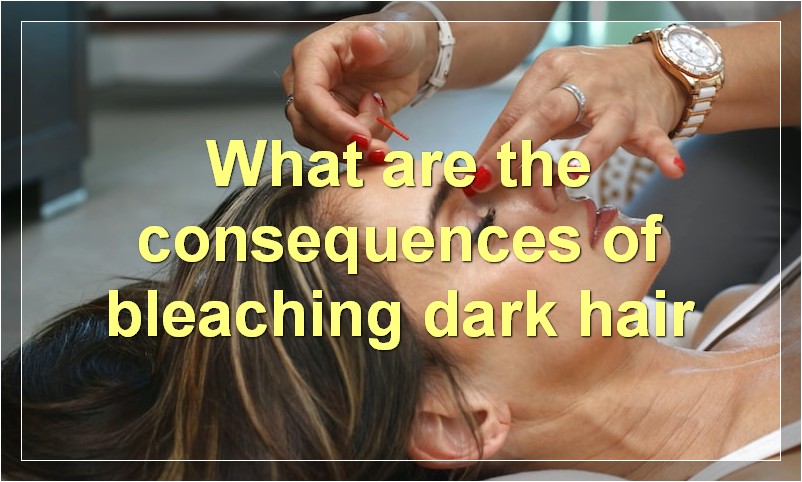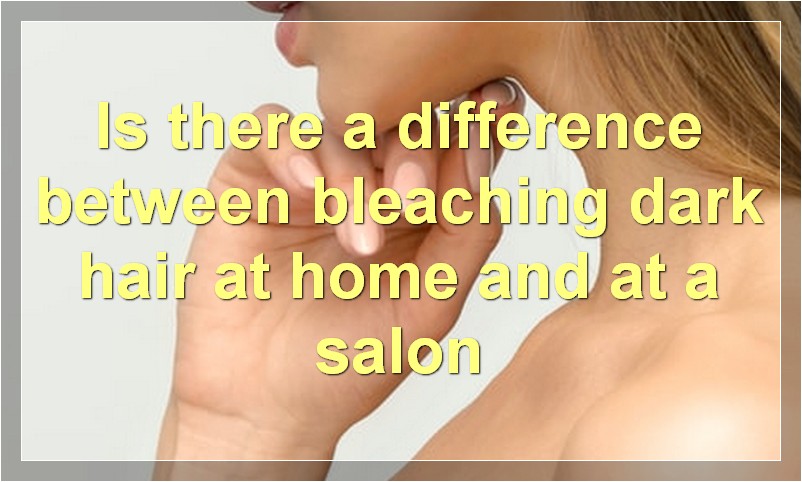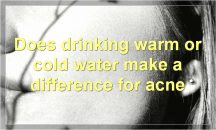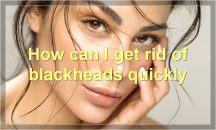If you’re looking for a way to brighten up your dark hair, bleaching is the way to go.
What is the best bleach for dark hair
When it comes to bleaching dark hair, there are a few things you need to take into account. First, you need to make sure that the bleach you choose is strong enough to lift the pigment from your hair. Second, you need to be careful not to over-bleach your hair, as this can lead to breakage and damage.
There are a few different types of bleach available on the market, so it’s important to choose the right one for your hair type. If you have very dark hair, you may need to use a stronger bleach, such as an oxygen bleach. If you have sensitive skin, you may want to opt for a gentler bleach, such as a cream or powder bleach.
When bleaching your hair, always follow the instructions on the packet carefully. You should also perform a patch test before bleaching your entire head of hair, just to be sure that you’re not allergic to the bleach. Once you’ve mixed the bleach according to the instructions, apply it to your hair from roots to tips.
Leave the bleach in for the recommended time, then rinse it out thoroughly. Follow up with a good conditioner to hydrate your hair and help repair any damage that may have been caused by the bleaching process.
If you follow these steps, you should be able to bleached your dark hair successfully without damaging it.
What are the consequences of bleaching dark hair

When it comes to bleaching dark hair, there are a few things you need to take into consideration before taking the plunge. First and foremost, bleaching is a very harsh chemical process that can seriously damage your hair if not done correctly. If your hair is already damaged, bleached hair can become even more brittle and dry, leading to breakage. In extreme cases, bleaching can even cause your hair to fall out.
Another thing to consider is the fact that bleaching will change the natural color of your hair. If you have dark hair, you can expect it to become a few shades lighter after bleaching. Bleached hair also tends to be more porous, which means it will absorb color more readily. This can be both a good and a bad thing – on one hand, it means you can experiment with different hair colors more easily; on the other hand, it also means your hair color can fade faster and require more frequent touch-ups.
Finally, bleaching dark hair can be a bit of a gamble. Because the natural color of your hair is being changed, it can be difficult to predict exactly how light your hair will end up after the bleaching process. If you’re not careful, you could end up with hair that’s several shades lighter than you intended – which may not be the look you were going for.
All in all, bleaching dark hair can be a bit of a risk. But if you take the time to do your research and find a reputable stylist who knows what they’re doing, the rewards can be well worth it. Just keep in mind that bleached hair requires a bit more care and attention than unbleached hair, so be prepared to put in a little extra effort to keep your new color looking its best.
How long does it take for bleached dark hair to return to its natural color
It’s a common question asked by anyone considering bleaching their dark hair: how long will it take for my hair to return to its natural color? The answer, unfortunately, is not so simple. It depends on a number of factors, including the health of your hair, the type of bleach used, and how often you wash your hair.
If you’re planning on bleaching your dark hair, be prepared to commit to a lengthy and potentially expensive process. It may take several bleaching sessions to lighten your hair to the desired shade, and you’ll need to use special shampoo and conditioner to maintain the integrity of your hair.
Once you’ve achieved the perfect bleached look, you may be tempted to wash your hair less frequently to prevent the color from fading. However, this can actually make your hair appear brassy or orange over time. If you want to prolong the life of your bleached hair, stick to washing it every few days with a gentle sulfate-free shampoo.
As you can see, there’s no one-size-fits-all answer to the question of how long it takes for bleached dark hair to return to its natural color. The best way to find out is to consult with a professional stylist who can assess your individual case and provide personalized advice.
How often should I bleach my dark hair
It’s no secret that bleach can be tough on your strands. “Repeated bleaching can lead to breakage, dryness, and ultimately hair loss,” says Dr. Mirmirani. If you have dark hair and want to keep it that way, she recommends using a semi-permanent hair color in a shade that’s one to two shades lighter than your current hue. “Permanent dyes contain ammonia, which helps open up the cuticle so the color molecules can penetrate,” she explains. “This also makes the dye deposit more deeply into the cortex—the part of the hair shaft where color lives—and can permanently alter your natural pigment.” If you’ve been bleaching your dark hair and want to give it a break, try one of these low-maintenance hair colors instead.
What is the safest way to bleach dark hair
There are a few things to consider when bleaching dark hair. The first is the type of bleach you will use. There are two types of bleach, peroxide and ammonia. Peroxide is the safest option for bleaching dark hair. Ammonia can be more harsh on the hair and scalp, so it is important to use a product that does not contain ammonia.
The second thing to consider is the strength of the bleach. If you are using a peroxide bleach, you will want to use a 20 volume or higher peroxide. This will help to lift the color from your hair without causing too much damage.
Finally, you will want to consider the type of after care you use. Once you have bleached your hair, it is important to use a deep conditioning treatment to help repair any damage that may have been done to your hair.
Is there a difference between bleaching dark hair at home and at a salon

The debate between doing your own hair at home and going to a professional Salon is one that has been around for years. Some people feel that they can save money by doing their own hair, while others believe that it is worth the investment to go to a salon. There is no right or wrong answer, but there are some things to consider before making a decision.
If you are thinking about bleaching your dark hair at home, there are a few things you should know. First, it is important to read the instructions on the bleach kit carefully. Bleach can be damaging to your hair if not used correctly, so it is important to follow the directions. Second, it is best to bleach your hair in small sections to avoid damaging all of your hair. Finally, be sure to condition your hair well after bleaching it to help repair any damage.
If you decide to go to a salon to have your dark hair bleached, there are a few things to keep in mind. First, be sure to book an appointment with a stylist who has experience bleaching dark hair. Second, be prepared to pay more for the service than you would at home. Finally, be sure to ask the stylist about after care instructions so you can maintain your newly bleached hair.
There is no right or wrong answer when it comes to bleaching dark hair at home or at a salon. It is important to do your research and make a decision based on what you feel comfortable with.
How much does it cost to bleach dark hair
How much does it cost to bleach dark hair?
This is a common question among women with dark hair who are considering bleaching their hair. The answer, unfortunately, is not a simple one. The cost of bleaching dark hair depends on a number of factors, including the type of bleaching product used, the length and thickness of your hair, the number of sessions required, and the skills of the stylist performing the procedure.
In general, you can expect to pay anywhere from $150 to $450 for a single bleaching session. If your hair is particularly long or thick, or if you require multiple sessions to achieve your desired level of lightness, the cost will be on the higher end of this scale. Additionally, if you opt for a high-end salon or stylist with extensive experience bleaching dark hair, you can expect to pay more than you would at a lower-priced establishment.
While the initial cost of bleaching dark hair may seem high, keep in mind that this is a procedure that can be performed relatively infrequently. Once your hair has been lightened to your desired shade, you will only need to return for touch-ups every few months. When compared to the monthly cost of other beauty treatments like hair color or highlights, bleaching is actually quite affordable in the long run.
If you’re considering bleaching your dark hair but are worried about the cost, talk to your stylist about options that fit your budget. There are ways to lighten your hair without breaking the bank, and a skilled stylist will be able to work with you to find the best solution for your needs.
What products should I use to maintain my bleached dark hair
When it comes to hair care, there are a few extra steps you need to take if you’ve got bleached dark hair. Whether you’re trying to maintain your current colour or achieve a new look, here are the products you should use to keep your bleached dark hair healthy and looking its best.
shampoo and conditioner: Look for a shampoo and conditioner that’s specifically designed for coloured hair. This will help to extend the life of your colour and prevent fading.
deep conditioner: Bleached dark hair can be prone to dryness, so make sure to use a deep conditioner regularly. This will help to hydrate your hair and keep it looking healthy.
heat protectant: If you use heat styling tools on your bleached dark hair, make sure to use a heat protectant beforehand. This will help to prevent damage and keep your hair looking shiny and healthy.
colour-safe styling products: When it comes to styling your bleached dark hair, opt for colour-safe products whenever possible. This will help to prevent fading and keep your hair looking its best.
Can bleaching dark hair damage it
When it comes to bleaching dark hair, the main concern is usually damage. Will the bleach strip away all of the natural oils that keep your hair healthy and shiny? Will it leave your locks dry and brittle? Bleaching can absolutely damage your hair – but there are ways to minimize the amount of damage that occurs. Here are a few tips for bleaching dark hair without causing too much harm.
The first step is to make sure you’re using a quality bleaching product. Drugstore bleaches can be harsh and contain lots of harsh chemicals. Instead, opt for a professional-grade bleach from a beauty supply store. This will be much gentler on your hair.
Next, you’ll want to avoid over-bleaching your hair. When bleaching dark hair, it’s best to do it in stages. Start with a lighter shade, and then gradually move to a darker shade. This will help minimize damage.
Finally, be sure to follow up your bleaching session with a deep conditioning treatment. This will help replenish lost moisture and keep your hair looking healthy.
What tips do you have for Bleaching dark hair
If you’re looking to lighten up your dark hair, bleaching is the way to go. But before you grab the bleach, there are a few things you should know. Here are our top tips for bleaching dark hair:
1. Choose the right bleach: Not all bleaches are created equal. When bleaching dark hair, you need to use a bleach that is strong enough to lift thedark pigment from your hair, but not so strong that it damages your hair. We recommend using a bleach that is specifically designed for dark hair.
2. Do a patch test: Before bleaching your entire head of hair, it’s important to do a patch test first. This will help you determine if you’re allergic to the bleach or if it’s too strong for your hair. To do a patch test, apply a small amount of bleach to a small section of skin on your inner elbow. If you develop any redness, swelling, or itching, do not use the bleach on your hair.
3. Protect your skin: When bleaching your hair, it’s important to protect your skin from the bleach. Apply a thin layer of petroleum jelly around your hairline and ears. This will help create a barrier between your skin and the bleach.
4. Follow the instructions: Be sure to follow the instructions on the bleach package to avoid damaging your hair. Most bleaches will need to be left on your hair for at least 30 minutes, but some may need to be left on longer.
5. Rinse with cool water: After bleaching your hair, rinse it thoroughly with cool water to remove all traces of bleach. Avoid using hot water as this can further damage your hair.
6. Condition your hair: Bleaching can be harsh on your hair, so be sure to condition it afterwards. Use a deep conditioning treatment or mask at least once a week to help keep your hair healthy and hydrated.





